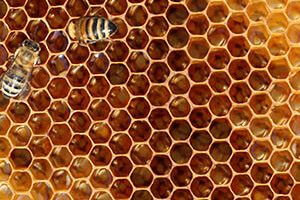
A beehive that withstands the cold winter months has tremendous potential. In spring, over-wintered hives can be split, re-queened or managed to produce significant quantities of honey. Establishing the conditions that enable a hive to survive the winter and flourish in spring is one of the many gratifying aspects of beekeeping. So it serves to reason that finding “dead-out” hives can be a bitter discouragement. Dead-outs are just that; hives in which the entire bee colony has died. Losing a hive is frustrating and expensive. However, to an observant beekeeper, a dead-out hive can be as educational as a growing hive in spring. Here we will identify some common causes of dead-out hives and explain how to decipher the clues they leave behind. While dealing with dead-outs could be considered the “other side” of beekeeping, understanding their causes and altering our practices accordingly might help us limit their frequency in the future.
How can a beekeeper tell if a hive is dead when frigid temperatures keep bees from flying? First, check the snow or ground cover near the entrance to the hive. Fresh dead bees on the ground can be a sign that the hive is still alive. Listen carefully at the hive entrance. Some beekeepers use a stethoscope placed against the outside of the hive. If the hive lacks the reassuring hum of live bees, put on a veil and pop the lid. Watch for live bees and listen with your head close to the top bars of the frames. A sudden appearance of live bees, an urgent buzzing or a whiff of alarm pheromone may indicate that the hive is alive and well, and a simple removal of dead bees from the entrance so live bees can enter and exit is all that is needed. Now is a great time to check for honey stores while the hive is open, adding reserve honey frames or other emergency feed as needed.
What if all the bees in the hive are dead? Passionate beekeepers have been known to grieve for a moment, considering all the time, energy and money invested into that mass of dead insects. Finding the queen curled up and dead is a major bummer. But, before planning a miniature state funeral for the deceased royalty—or pondering other hobbies to pursue—resolve not to be overly discouraged by a dead-out. Instead of dwelling on the loss, shift the focus to any hives that survived the winter and try to identify differences between the healthy hives and the dead-out hive. As disappointing as a dead-out hive can be, there is much to learn from one.
Conduct a post-mortem analysis of your dead-out hive. First, note the location of the main cluster of dead bees. Is it high or low in the hive? Check the weight of each box. Do some boxes contain honey stores? If there is a large cluster of bees and plenty of honey in the hive, it may indicate that the bees simply starved within inches of stored honey, unable to move due to cold or unwilling to separate themselves from the frames of brood for which they were caring. This scenario is highly frustrating for the conscientious beekeeper who manages the bees effectively throughout the year, but still loses the entire colony over the winter. Do not stop there. Keep looking.
Pay close attention to the bottom board. Are there signs of mice? Look for feces or chewed nesting material. Examine the bottom board mess for varroa mites. If you see thousands of them, you have likely found the cause of the bees’ demise or at least the catalyst for the development of a fatal
disease.
Sort through the dead bees carefully with eyes peeled for small hive beetles and wax moth larvae. A healthy, full sized hive can typically handle a mild infestation of hive beetles, but too many beetles and their larvae can decimate a smaller hive. Look for wax moth larvae or their feces (little black specks) and for their webbings on the comb. If wax moth larvae or small hive beetles have overtaken a hive, it is usually because something else weakened the bee population allowing the beetles, moths and their larvae to take ownership.
Do the bees have deformed bodies? Varroa mites can cause deformities. Do their wings show signs of Deformed Wing Virus? Are there K-winged bees—aptly named because their wings are shaped like the letter “K”? This could indicate a tracheal mite infestation.
Keep an eye out for the queen among the dead bees. Is she the marked original or has she been replaced? If she is a new one, is she …


